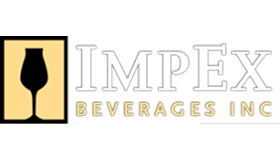Problem
Scaling Pains and Fragmented Operations
An Italian manufacturer of assistive mobility and medical devices is dedicated to enhancing independence and dignity for individuals with disabilities through accessible and innovative technology.
Prior to SmartSuite, the company relied on a mix of tools—ClickUp, FileMaker, and spreadsheets—that could not keep pace with their expanding logistics and marketing operations. As their headcount jumped from 5 to 41 within two years, they faced growing challenges in scalability, operational visibility, and user licensing. The team struggled to accommodate light users—those who only needed to view or update records without full access—without incurring excessive licensing costs. Marketing had already migrated to a separate platform to reduce complexity, fracturing collaboration and introducing inefficiencies. "We were spending more effort building workarounds to manage license constraints than optimizing our workflows," said the Operations Lead. "It wasn't scalable."
Q1
Solution
Building a Unified, Scalable Workflow Engine
SmartSuite’s relational database architecture immediately resonated with the team’s systems-focused mindset. They implemented SmartSuite across core workflows, beginning with logistics operations and expanding into quoting, purchasing, and marketing campaign tracking. SmartSuite’s linked records, shared dashboards, and form-based workflows offered a dynamic structure that was easier to navigate and scale. Automated forms, dynamic filtering, and pre-filled records reduced risk of human error while empowering teams to manage their processes independently.
Q2
Result
Operational Visibility Without the Licensing Strain
SmartSuite became the operational backbone for a growing logistics tech firm preparing for a major merger. With 2x growth in headcount and a further 30–40 employees incoming, the team now has a scalable system that can accommodate both advanced users and casual contributors.
Key operational processes—container tracking, incident reporting, procurement, and marketing content management—were unified under one platform. Instead of spending time manually managing tasks or bouncing between tools, teams now rely on automated workflows, linked dashboards, and a centralized data structure. This not only improved visibility and speed but significantly reduced licensing friction.






-min.jpeg)
-min.png)
-min.png)

%2520(1).jpeg)


%2520(1).jpeg)


-min.jpeg)
-min.png)
-min.png)
.jpeg)
.png)
.png)
.jpeg)
.png)
.png)
-min.jpeg)


.jpeg)
.png)
.png)



-min.jpeg)
-min.png)
-min.png)
-min.jpeg)
-min.png)
-min.png)

.png)
.png)



-min.jpeg)
.png)
.png)
-min.jpeg)
-min.png)
-min.png)



-min.jpeg)
-min.png)
-min.png)



-min.jpeg)
-min.png)
-min.png)
-min.jpeg)
.png)
.png)
.jpeg)
.png)
.png)
-min.jpeg)
-min.png)
-min.png)



-min.jpeg)
-min.png)
-min.png)
-min.jpeg)
-min.png)
-min.png)

-min.png)
-min.png)
-min.jpeg)
-min.png)

-min.jpeg)
.png)
.png)
%2520(1).jpeg)



.png)
.png)
%2520(1).jpeg)
.png)
.png)
-min.jpeg)
%2520(1).png)
%2520(1).png)



%2520(1).jpeg)
%2520(1).png)
%2520(1).png)
%2520(1).jpeg)
.png)
.png)

.png)
-min.png)
-min.jpeg)
-min.png)
-min.png)



-min.jpeg)
-min.png)
-min.png)
.jpeg)
.png)
.png)
-min.jpeg)
-min.jpeg)


-min.jpeg)
-min.png)
-min.png)
-min.jpeg)
-min.png)
-min.png)
-min.jpeg)
-min.png)
-min.png)
%2520(1).jpeg)
.png)
.png)
-min.jpeg)
.png)
.png)
-min.jpeg)
-min.png)
-min.png)



-min.jpeg)
-min.png)
-min.png)
-min.jpeg)
.png)
.png)



%2520(1).jpeg)
.png)
.png)
.jpg)

%2520(1).jpeg)









.jpg)
-min.jpeg)
-min.png)
-min.png)



.jpg)
.png)
.png)
-min.jpeg)
-min.png)
-min.png)

.png)
.png)
.jpg)
.jpg)
.jpg)
.jpg)
















.png)
.png)






-min.jpeg)
-min.png)
-min.png)
-min.jpeg)
.png)
.png)
.jpg)
.jpg)
.jpg)
.jpg)



.jpg)
-min.png)
-min.png)
.jpg)
.jpg)
.jpg)
%20(1).jpg)
-min.png)
-min.png)
.jpg)
.jpg)
.jpg)
.jpg)
.jpg)
.jpg)
.jpg)
-min.jpeg)
-min.png)
-min.png)
.jpeg)
.png)
.png)


